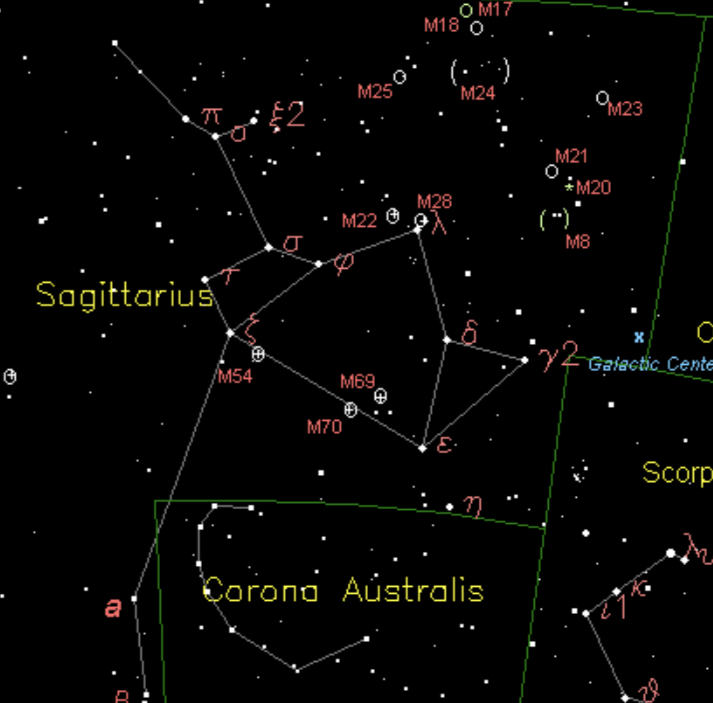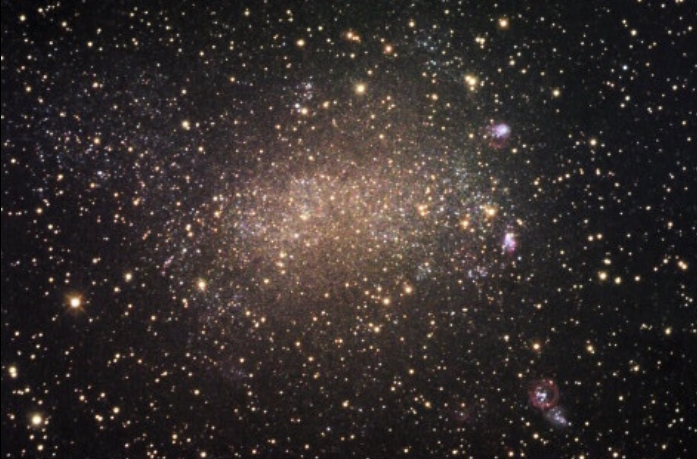2020. 10. 3. 19:14ㆍSky observation
Sagittarius - The Archer
For northern observers, Sagittarius is visible along the southern horizon in late summer. The central Milky Way runs through the western region of Sagittarius. This area contains the most abundant and wide-ranging collection of deep sky objects in the sky. The best time to view Sagittarius is from June to August.
History and Mythology
The constellation Sagittarius was recorded by Ptolemy in the second century AD. The name Sagittarius is Latin and translates as "The Archer". However, it is far older than the time of Ptolemy. Like most of the zodiac constellations, Sagittarius is believed to have been recorded as far back as 1000 BCE in the ancient Babylonian astronomical compendium referred to as MUL.APIN. The constellation was known to the ancient Babylonians as PA.BIL.SAG and is thought to be to the name of an ancient deity. In the Babylonian text, PA.BIL.SAG is described as both a warrior and "a wild bull with brindled thighs". The closest, and most likely, link to this Babylonian god is found in Sumerian mythology; Ninurta is the Sumerian god of war who battles a birdlike monster called Imdugud. The history of the constellation's association with a bull and Ninurta's reputation for being pictured with a bow and arrow may help explain the form of the inherited constellation.

The Greeks believed the constellation represented both a centaur and the archer Crotus. Crotus is described as a great marksman and a friend of the muses. While enjoying their music, Crotus expressed his joy with loud clapping or stomping, thus creating the origin story for musical rhythm. The muses were said to be so fond of his celebratory attentions that they demanded that Crotus be placed in the heavens.
Notable Stars
The bright stars in Sagittarius form a figure that resembles a teapot more than an archer. At the bottom of the bow is the 1.8 magnitude giant star Kaus Australis. This is the brightest star in Sagittarius. Kaus Medius marks the middle of the archer's bow. It is 305 light-years away. Kaus Borealis is the northern part of the bow. It is a third magnitude star at a distance of 77 light-years.
Second magnitude Sigma Sagittarii is the second brightest star in Sagittarius, and appears in the handle of the constellation's "teapot" asterim. Its modern name, Nunki, is Assyrian or Babylonian. Alpha Sagitarii, with the traditional Arabic name Rukbat, "the knee of the Archer", is only fourth magnitude. Beta Sagittarii is really two stars, separated by only 0.36 degrees in the sky. They have the traditional names Arkab Prior and Arkab Posterior. Both are only fourth magnitudes; Arkab means "hamstring" in Arabic. The designation Gamma Sagittarii is also shared by two star systems in the constellation Sagittarius. The brighter has the traditional name Alnasl, Arabic for "Arrowhead"; the fainter is the Cepheid variable W Sagittarii, whose magnitude goes from 4.3 to 5.1 over a 7.6-day period.
Clusters, Nebulae, and Galaxies
The center of our galaxy lies in the direction of Sagittarius. This area of the heavens is densely populated with star clusters and nebulae, many of which can be seen with the naked eye. The Sagittarius Star Cloud, M 24, is the densest region in the Milky Way. On a clear, dark night this area is a spectacular sight in binoculars.
There are many star clusters in Sagittarius. M 18 is a sparse cluster with about 20 stars. M 25 is a fifth magnitude cluster which appears as a loose, scattered group of 30 stars. M 23 is an irregularly shaped cluster with some 120 stars. M 21 is a diamond-shaped cluster with 70 stars of eighth magnitude and fainter.

Globular cluster M 22
M 22 is a fifth magnitude globular cluster which is visible in binoculars. It is the closest globular cluster to our solar system. Other bright Messier globular clusters in Sagittarius include M 28, M 54, M 55, M 69, M 70, and M 75. Each of these is a rewarding sight in an 8-inch telescope.
On a clear night, if you look at the area directly above the spout of Sagittarius' teapot, you can see M 8, the famous Lagoon Nebula. This glowing cloud of gas and dust appears nearly one degree in diameter. M 8 is a spectacular object in a small telescope, nearly as impressive as M 42 in Orion. It lies 5200 light-years away, and is at least 100 light-years across; the star cluster NGC 6530, embedded in the eastern half of the nebula, is forming from the nebula's gases.

The Lagoon Nebula (M 8) at bottom and Trifid Nebula (M 20), top right.
M 20, the Trifid nebula, is another striking nebula just north of M 8. It contains both reddish emission nebulosity and bluish reflection nebulosity; it gets its name from three dark lanes which divide the bright nebulosity into three parts. M 17, known as the Omega, Swan, or Horseshoe Nebula, is smaller but more concentrated than M 8. To view these objects, use low power in a 4-inch or larger telescope.

The Omega Nebula, M 17
For larger telescopes, an interesting object is the small eighth magnitude open cluster NGC 6520, juxtaposed next to the dark nebula Barnard 86. NGC 6520 is about 6 arcminutes in diameter; the dark nebula Barnard 86 appears about 5 arcminutes across. NGC 6520 lies about 5500 light-years distant, and Barnard 86 is assumed to be leftover dust from the same star-forming material that produced the cluster.
The Little Gem Nebula, NGC 6818, is a small, bright ninth magnitude planetary nebula about 6000 light-years away. Barnard's Galaxy, NGC 6822, is a dwarf irregular galaxy about 1.6 million light-years away. It is one of the closer galaxies to the Milky Way, and a member of the Local Group. It is similar in structure and composition to the Small Magellanic Cloud.

Barnard's Galaxy
'Sky observation' 카테고리의 다른 글
| Arcturus (0) | 2020.10.30 |
|---|---|
| 레오-라이온 (0) | 2020.10.12 |
| 독수리 성운, 별 여왕 성운 (0) | 2020.09.25 |
| Alpha Canis Majoris-시리우스 (0) | 2020.09.21 |
| 지구 (0) | 2020.09.20 |